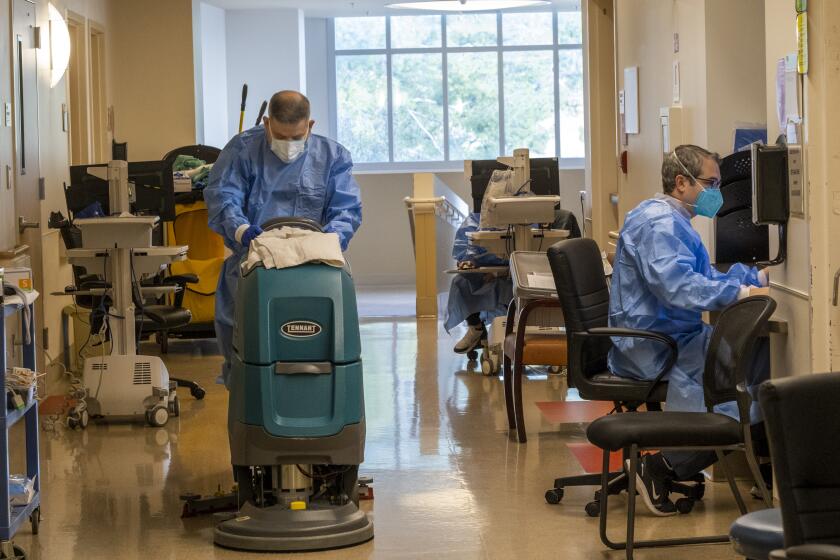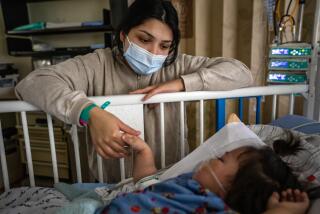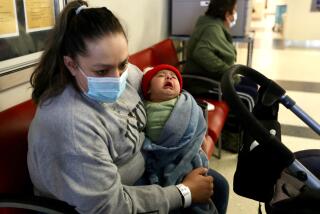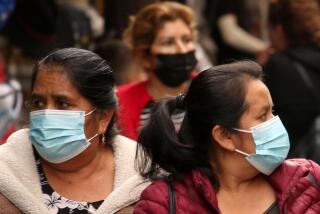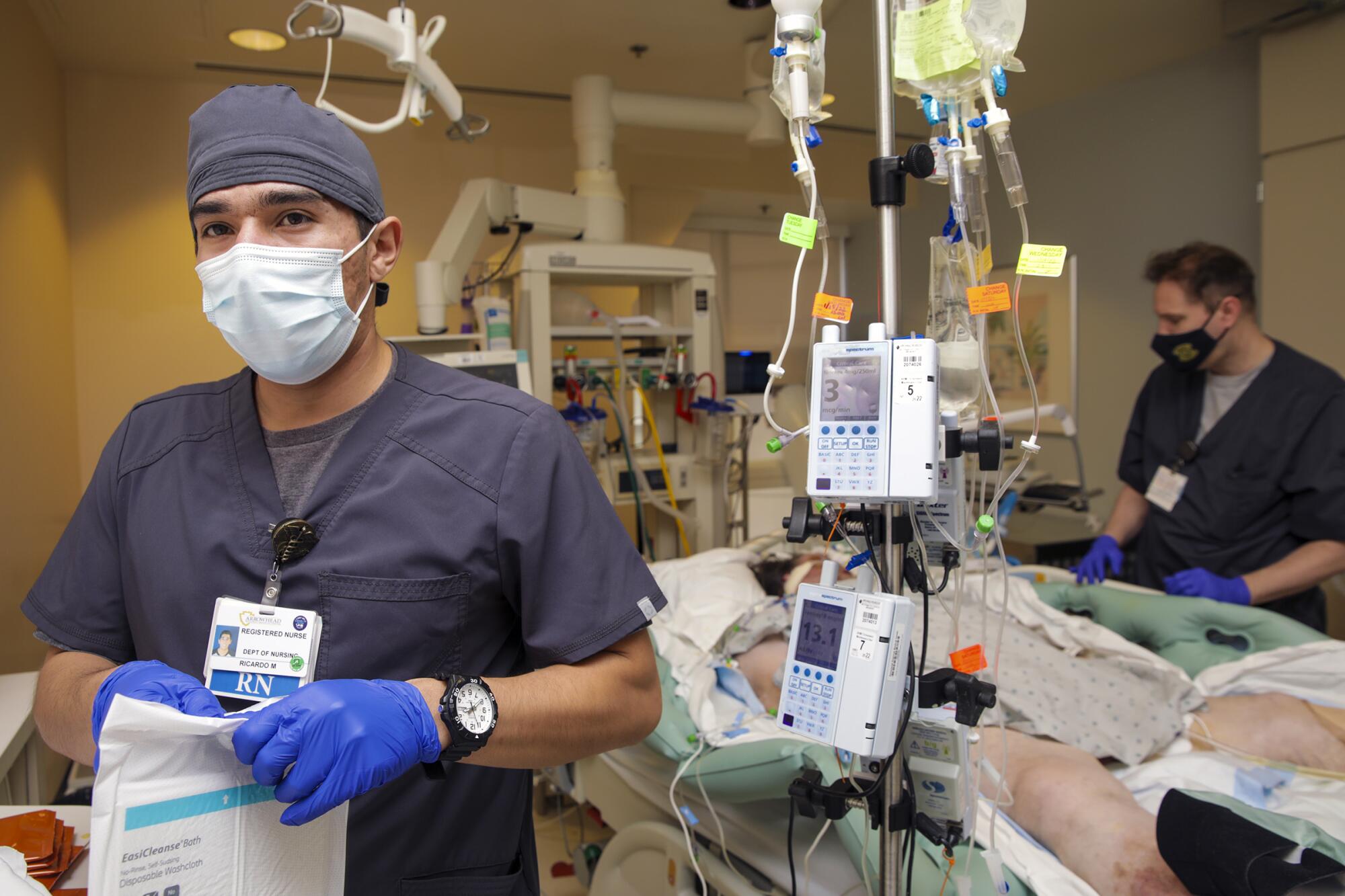
- Share via
COLTON, Calif. — The 28 patients had camped out for hours and even days in the emergency room of Arrowhead Regional Medical Center. With more than 100 COVID-19-positive patients in the hospital, there weren’t enough in-patient beds to put them in.
In the fourth-floor intensive care unit, tired nurses tended to three COVID patients at a time instead of their normal two. Five nurses were out sick and those tasked with scheduling staff likened it to a game of “Tetris,” fitting in people wherever they could.
Meanwhile, eight miles away that morning, a handful of Arrowhead nurses pleaded for help from the San Bernardino County Board of Supervisors and warned that the county-run hospital would continue to lose nurses if something didn’t change.
One of those circumstances would be difficult enough for a regional hospital to deal with. But all three at once felt disastrous.
The hospital COVID census in San Bernardino County has nearly tripled from 398 before Christmas to 1,107 as of Jan. 13, according to county data. At the peak in January 2021, when the virus caused deaths to skyrocket, that number stood at 1,785.
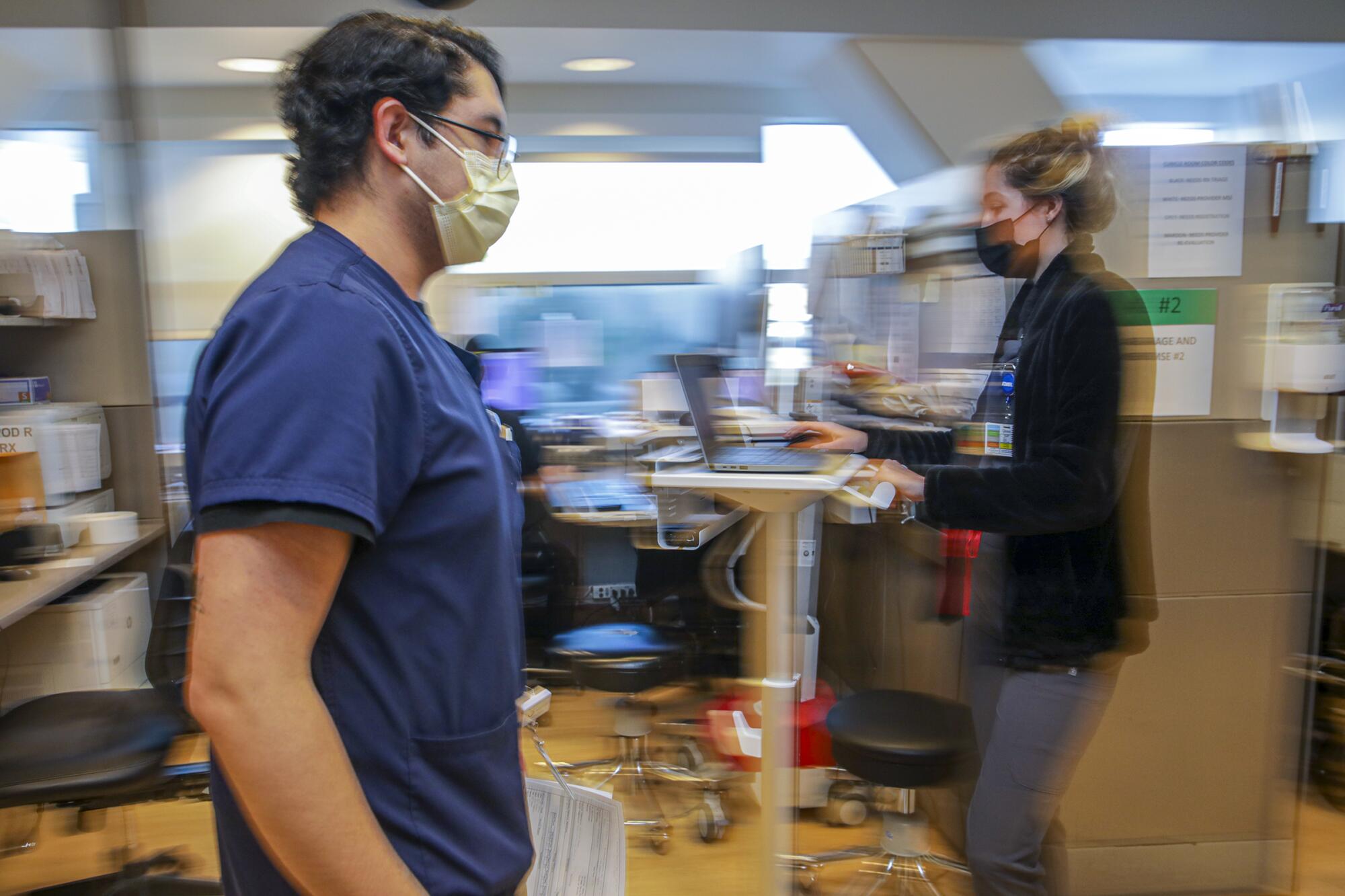
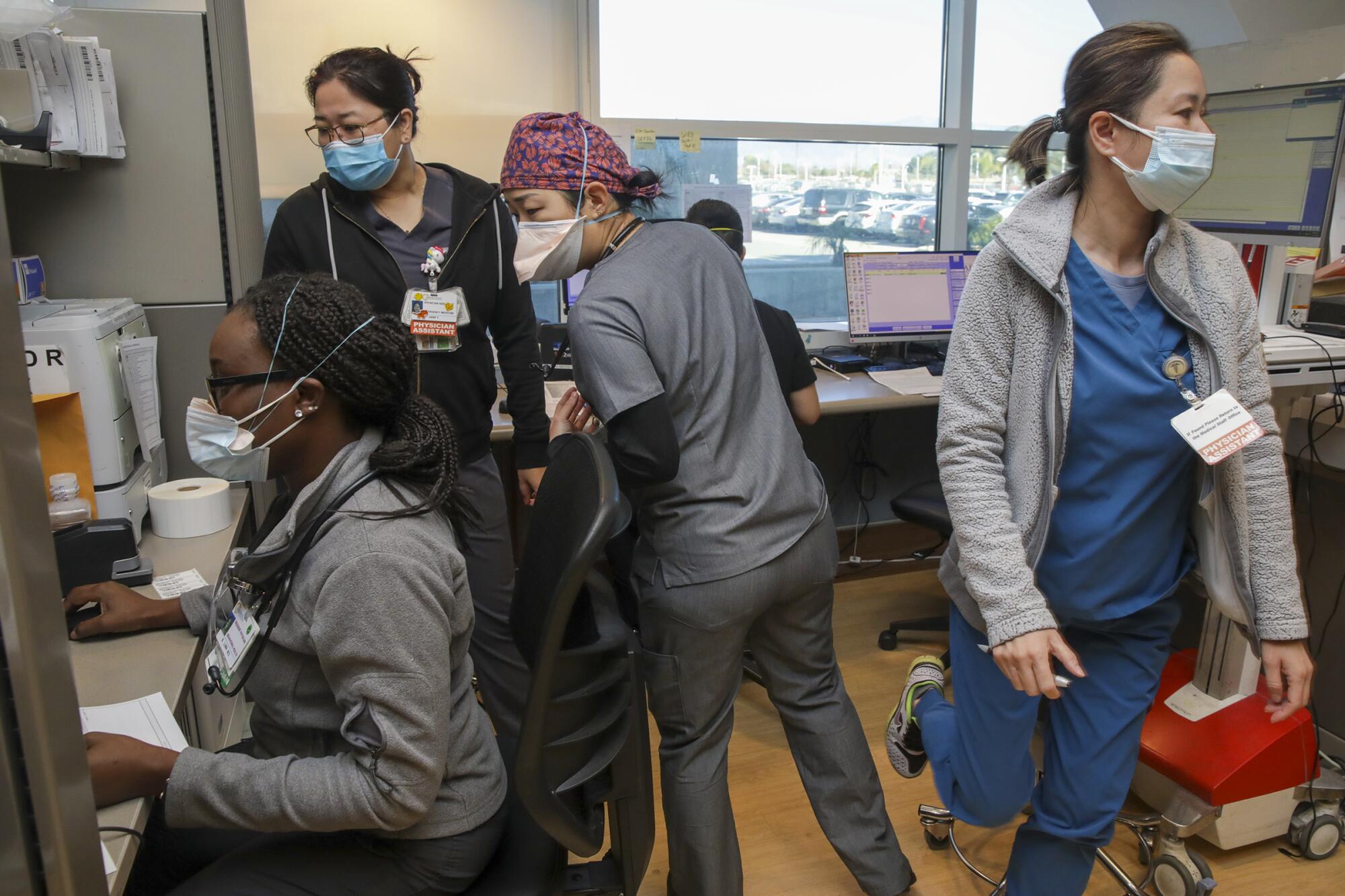
The sheer number of hospital staff members testing positive for the coronavirus across California recently led state health officials to allow healthcare workers who are infected but asymptomatic to return to work while taking extra precautions to avoid spread. But many hospital officials fear that could worsen problems. Arrowhead is still weighing whether to take that step — one that few could have contemplated a year ago.
“The fact that we’re severely impacted like we were last year and the fact that so many of our nurses have left, or taken travel assignments, or are burnt out and kind of feel deflated or dejected.... Staff morale is at one of the lowest I’ve ever seen,” said Dr. Troy Pennington, an emergency room physician at the hospital.
Pennington said the current surge “feels worse” than the one last winter.
Experts say it’s a necessary solution to staffing shortages, yet many workers say the policy could be dangerous.
And yet, in many ways, that should not be.
A year ago, COVID tore through California and much of the U.S. when hardly anyone was vaccinated.
The Omicron variant, while highly contagious, is also generally less severe than the Delta one. And yet the current surge — which has overwhelmingly made the unvaccinated seriously ill — has preyed on several factors that have piled up as the pandemic stretches on.
With burned-out workers leaving in droves, hospitals were already facing staffing shortages. And the Omicron variant is so contagious that although the vaccine has protected staff from getting really ill, it has forced many to call out sick.
“We’ve had more people out because of COVID during this surge than we did previously,” Pennington said.
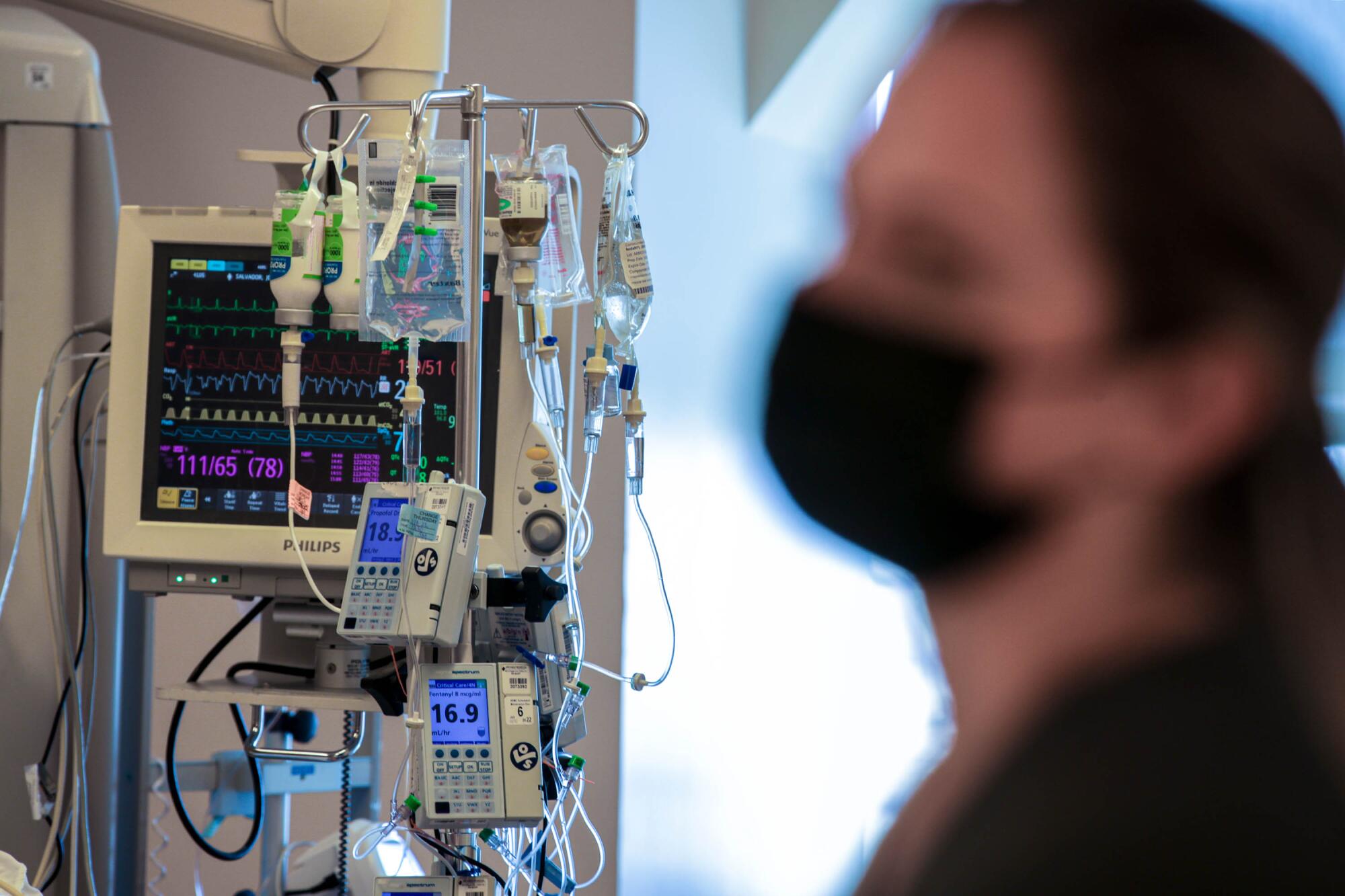
Officials are forecasting weeks of strain in hospitals even as there are glimmers of hope the Omicron wave may soon peak in the northern part of the state.
More than two dozen people waited in the ER on a recent Tuesday for a nurse to call their name. They had ailments that had nothing to do with COVID.
Those with flu-like symptoms were directed to a trailer outside near the ambulance bay. The ones who were not seriously ill would be sent home.
In a gray cubicle behind the registration desk, Genesis Interiano, a registered nurse, wrapped a blood pressure cuff around her patient’s arm. It was her first day on the job. Celine Aragon, who was training her, sat nearby guiding Interiano on questions to ask the man.
With all the recently hired nursing graduates, Interiano hadn’t yet been assigned a permanent person for her training — leaving Aragon to fill in.
“Before COVID started spiking again it was a little quieter on a Tuesday,” Aragon said. She wondered whether the National Guard would show up to the hospital like it did last year.
“I don’t know if they’ll step in again or not,” she said. “I think we could definitely use it.”
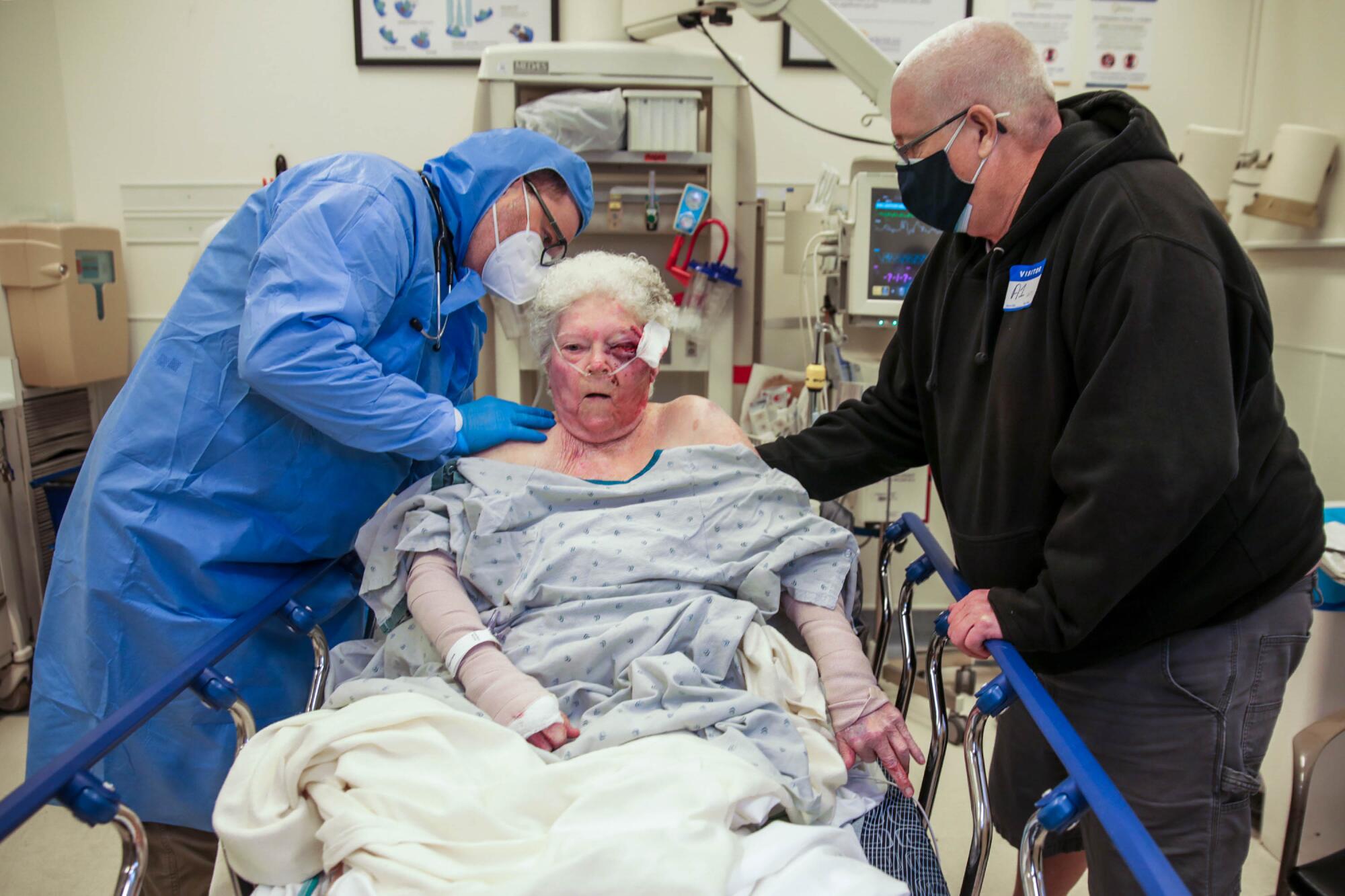
The hospital’s emergency room is normally staffed with 24 to 26 nurses, but there have been times where there are half or less, Pennington said. Some night shifts there are only nine.
On this 12-hour shift, Pennington was assigned to supervise the trauma pod and other seriously ill patients. That morning, he was down an ER physician out sick with COVID.
As he moved through each pod — A, B, C and D — Pennington fielded a phone call about a leukemia patient and a request from a physician for a second opinion. At the front of the ER, he called a “code stroke,” after a 47-year-old man came in with weakness in his left side, inability to walk and slurred speech.
In Pod C, a patient on high-flow oxygen asked over and over in Spanish when she could go home. The woman, admitted that morning with a profoundly low oxygen level, would have to be admitted, Pennington said.
There were COVID patients suffering severe shortage of breath and respiratory failure. Of the more than 100 COVID patients in the hospital, about 70% were unvaccinated.
“Sometimes my conversation with the ICU admitting doctor is distilled down to one word: vaccinated or not,” Pennington said. “That one word sometimes conveys more information about prognosis than just about anything else.”
In the trauma pod, Pennington asked Scott Mehling questions about his mother, who had been rushed to the hospital by ambulance after she fell face first onto her tile floor.
Margaret Mehling was on blood thinners, putting her at increased risk for internal bleeding. The 85-year-old, who was COVID negative, would need to be observed for the next 24 hours to ensure she didn’t develop bleeding.

“She’s likely going to get stuck here because we don’t have beds upstairs,” Pennington said. “We don’t have any place to put her.”
There were nearly 30 other patients in the emergency department waiting for beds in the hospital proper. On Monday, that number stood at 44. That puts a strain on resources and the ability to treat incoming ER patients.
Meanwhile, it feels like a different world outside the hospital, where many people seem to be going about their life — something that vaccinated people can generally do with considerably less risk from the virus.
“You walk around outside and you can almost forget we have a pandemic,” Pennington said.
But the reality, he said, is that this is not the time to do anything that could land you in the hospital because the waits alone can be punishing.
“This is not a time to take risks,” he said. “Those things that you take for granted, being able to get an ambulance quickly, being able to get in and be seen quickly in an emergency department, are frequently not happening.”
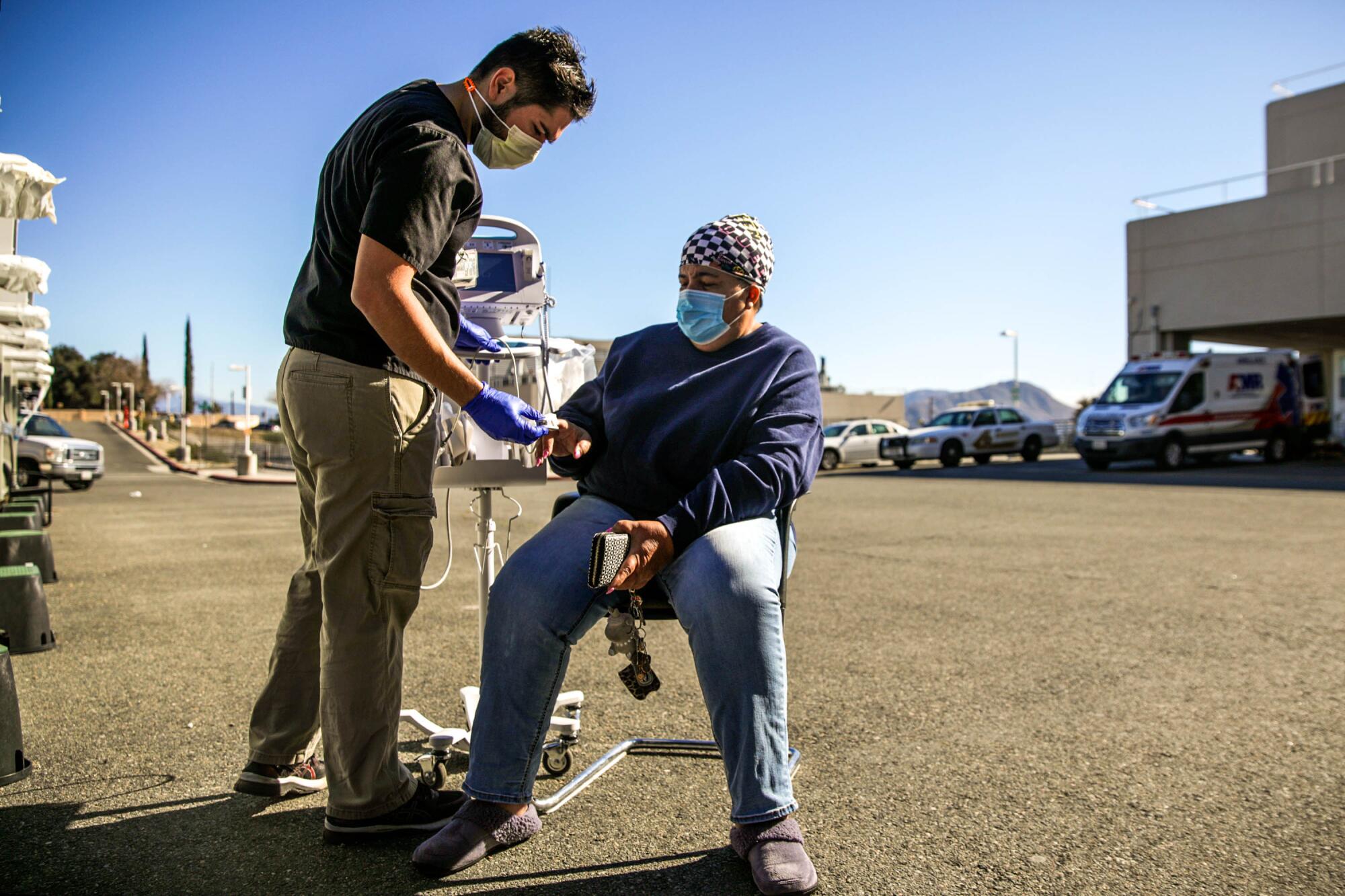
Upstairs, in 4 North ICU, there were 15 COVID patients and one available bed after a patient died that morning. The hospital recently set up a second ICU to hold overflow COVID patients.
In one of the rooms, Ricky Miranda spoke with a patient who had been admitted the day before after fracturing his back in a fall. When he tested positive for the coronavirus, he was moved to this ICU before getting well enough to be discharged.
Miranda, who graduated from Cal State San Bernardino in May, was hired in October as part of a 61-person nursing cohort. He would finish his training at the end of the month.
Typically, only one or two trainees are brought into the ICU, but with so many empty positions “we’re hiring five, six at a time,” said Zorina Hernandez, the critical care unit manager. She compared scheduling during the surge to a frustrating game of “Tetris.”
“Our staff is working extra, double time, overtime, extra days just to try and pick up for those who are out sick,” Hernandez said. “It’s draining them.”
“We are just getting pushed to our breaking point,” added ICU charge nurse Beth Koelliker. “We can’t function and take care of our normal population with COVID overrunning and taking over an entire ICU.”

Those frustrations simmered over earlier that day at the county Board of Supervisors’ Jan. 11 meeting, where some Arrowhead nurses shared their experiences.
Francisco Amezcua, a registered nurse in the hospital’s emergency department, detailed the strain caused by being short-staffed, stating that “not only does this cause a delay in needed treatment, it also causes nursing staff to work with unsafe patient ratios.”
“It is a numbers game. There will be mistakes, treatments will be delayed and preventable deaths will occur,” Amezcua said. “Please consider this could be your loved one any given day.”
More to Read
Sign up for Essential California
The most important California stories and recommendations in your inbox every morning.
You may occasionally receive promotional content from the Los Angeles Times.


